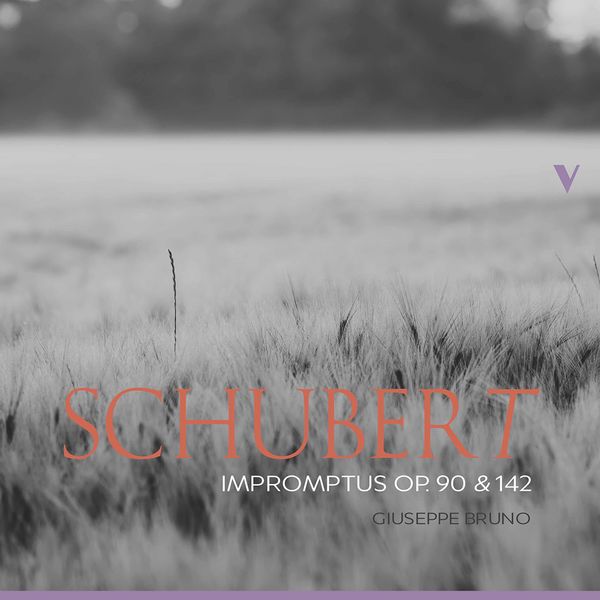
Giuseppe Bruno – Schubert – Impromptus Opp. 90 & 142 (2020)
FLAC (tracks) 24 bit/88,2 kHz | Time – 01:12:03 minutes | 983 MB | Genre: Classical
Studio Masters, Official Digital Download | Front Cover | © OnClassical
What’s in a title? When a composer sets out to compose, very often inspiration comes in the form of works of various length that do not have a specific designation. It was the case for Bach’s preludes from the Well-tempered Clavier, Beethoven’s bagatelles, or Chopin’s preludes – all works that were perhaps too short as standalone pieces, but that eventually found their way into larger collections. Today we view these as cohesive sets, though it was never the original intention.
In 1827, Franz Schubert composed a number of standalone works that did not quite find a place as movements of sonatas or other larger compositions. He offered four of them to Thomas Haslinger for publication as four pieces that “could be issued individually or all four together.” When the arrangement fell through, Schubert offered them to Schott. Only the first two from Op. 90/D899 were published before the composer’s death. Following Haslinger’s initial suggestion, they were titled “impromptus.” The title originated from works by contemporaneous composers such as Vorisek and Tomasek, which had gained great popularity in the early 1820s. The third and fourth numbers from Op. 90 did not see publication until 1857; the second set of four impromptus (Op. 142/D935) was published posthumously by Diabelli in Vienna in 1839. In the latter set, Robert Schumann saw attempts to movements of a four-movement sonata.
Op. 90/D 899 opens with a work in C minor in sonata form, but with an abbreviated recapitulation. The two themes, stemming from similar rhythmic cells, oppose a march-like motif to a more tender melodic idea. The second number, in E-flat major, following the A-B-A form with a coda based on the material of the B section, features a perpetual motion in scales cast against a tragic waltz. The lyrical third impromptu, in G-flat major (originally published in the key of G major for ease of reading), is also in strict A-B-A form, and is one of Schubert’s most celebrated works. The fourth impromptu is in A-flat major, despite the minor mode introduced by the opening. A second idea, this time in A-flat major, may at first seem material for a middle section. However, the real Trio is introduced in the key of C-sharp minor, and a full recapitulation of the lengthy opening section bookends the piece.
Tracklist
Franz Schubert (1797 – 1828): 4 Impromptus, Op. 90, D. 899:
1 4 Impromptus, Op. 90, D. 899: No. 1 in C Minor
2 4 Impromptus, Op. 90, D. 899: No. 2 in E-Flat Major
3 4 Impromptus, Op. 90, D. 899: No. 3 in G-Flat Major
4 4 Impromptus, Op. 90, D. 899: No. 4 in A-Flat Major
4 Impromptus, Op. 142, D. 935:
5 4 Impromptus, Op. 142, D. 935: No. 1 in F Minor
6 4 Impromptus, Op. 142, D. 935: No. 2 in A-Flat Major
7 4 Impromptus, Op. 142, D. 935: No. 3 in B-Flat Major
8 4 Impromptus, Op. 142, D. 935: No. 4 in F Minor
Download:
mqs.link_GiuseppeBrun0SchubertImpr0mptus0pp.90142202024882.part1.rar
mqs.link_GiuseppeBrun0SchubertImpr0mptus0pp.90142202024882.part2.rar




















![Giuseppe Bruno - Schubert: Piano Sonatas D. 279, D. 459, D. 459a & Adagio in G Major, D. 178 (2022) [FLAC 24bit/88,2kHz] Giuseppe Bruno - Schubert: Piano Sonatas D. 279, D. 459, D. 459a & Adagio in G Major, D. 178 (2022) [FLAC 24bit/88,2kHz]](https://imghd.xyz/images/2022/11/27/ifo4kw5fouiwc_600.jpg)
![Giuseppe Bruno - Schubert: Piano Sonatas, D. 566, D. 613 & Other Piano Works (2024) [FLAC 24bit/88,2kHz] Giuseppe Bruno - Schubert: Piano Sonatas, D. 566, D. 613 & Other Piano Works (2024) [FLAC 24bit/88,2kHz]](https://imghd.xyz/images/2024/04/26/sh24vmv5vi2lb_600.jpg)
![Giuseppe Bruno - Schubert: Piano Works (2022) [FLAC 24bit/88,2kHz] Giuseppe Bruno - Schubert: Piano Works (2022) [FLAC 24bit/88,2kHz]](https://imghd.xyz/images/2022/10/02/u1dk3dnu2aq7b_600.jpg)
![Giuseppe Bruno - Schubert: Piano Sonatas, D. 850 & D. 571 (Completed by G. Bruno) (2024) [FLAC 24bit/88,2kHz] Giuseppe Bruno - Schubert: Piano Sonatas, D. 850 & D. 571 (Completed by G. Bruno) (2024) [FLAC 24bit/88,2kHz]](https://imghd.xyz/images/2024/04/15/kd2cw1y1pkgya_600.jpg)
![Giuseppe Bruno - Schubert: Piano Sonata No. 13, D. 664 & No. 15, D. 840 "Reliquie" (2019) [FLAC 24bit/88,2kHz] Giuseppe Bruno - Schubert: Piano Sonata No. 13, D. 664 & No. 15, D. 840 "Reliquie" (2019) [FLAC 24bit/88,2kHz]](https://getimg.link/images/imgimgimg/uploads/2020/04/sHHHlQT.jpg)
![Giuseppe Bruno & Vincenzo Maxia - Liszt: Les preludes & Faust-Symphonie (Version for 2 Pianos) (2019) [FLAC 24bit/88,2kHz] Giuseppe Bruno & Vincenzo Maxia - Liszt: Les preludes & Faust-Symphonie (Version for 2 Pianos) (2019) [FLAC 24bit/88,2kHz]](https://getimg.link/images/imgimgimg/uploads/2019/12/jxwAj09.jpg)